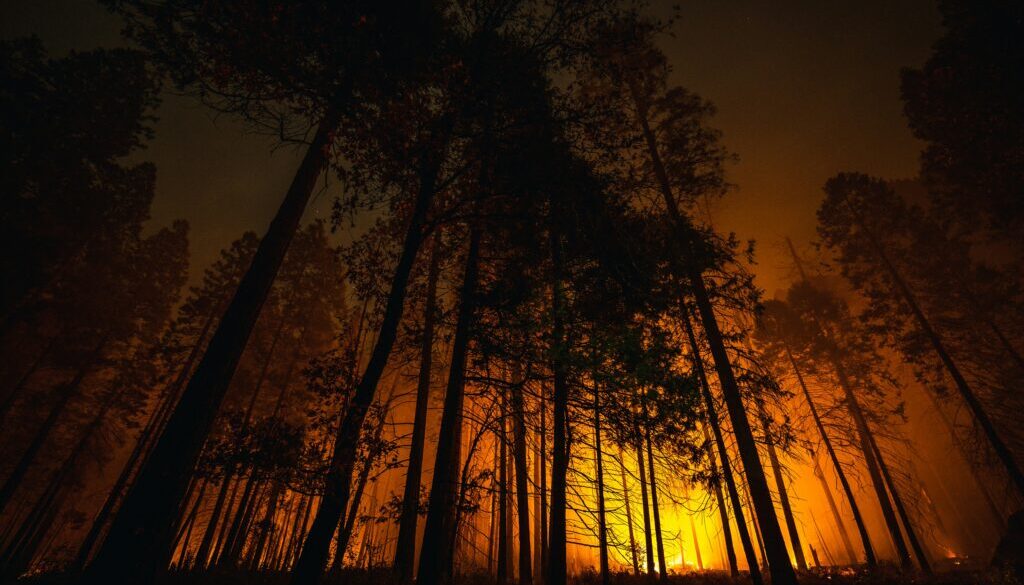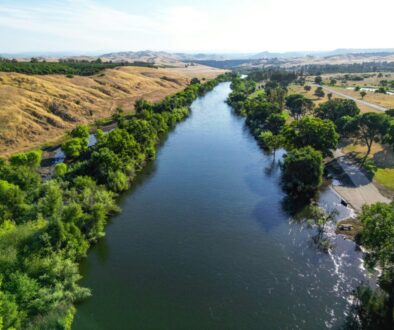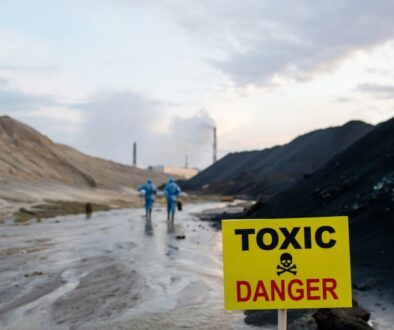Postcard from California: The human cost of living with wildfires
 The toll of wildfire in California is staggering: In the last 10 years, wildfires have burned more than 13.6 million acres of the state and taken the lives of 144 people, including 15 firefighters. The state estimates property damages from the more than 93,000 wildfires in those years at nearly $250 billion.
The toll of wildfire in California is staggering: In the last 10 years, wildfires have burned more than 13.6 million acres of the state and taken the lives of 144 people, including 15 firefighters. The state estimates property damages from the more than 93,000 wildfires in those years at nearly $250 billion.
But sobering as those statistics are, they don’t measure the full cost to Californians from living with increasingly deadly and destructive wildfires.
A new study, led by researchers from the Fielding School of Public Health at the University of California at Los Angeles (UCLA), calculated that from 52,480 to 57,710 Californians died prematurely from exposure to wildfire smoke between 2008 and 2018. The study, published June 7 in the peer-reviewed journal Science Advances, estimated the economic impact of those lost lives at between $432 billion and $456 billion.
“Climate change, forest mismanagement and an expansion of the wildland-urban interface have led to worsening wildfires across California, and with those fires come smoke pollution and increasing health impacts from air pollution exposure,” Rachael Connolly, a staff researcher at the UCLA Fielding School and lead author of the study, said in a statement. “This is the first research exploring how that chronic, long-term smoke exposure affects people across the state.”
The wildland-urban interface refers to zones where people live near forests or other undeveloped areas at greater risk of wildfire. The high cost and scarcity of housing in coastal cities is pushing more and more Californians to move inland, swelling the population in areas more likely to burn.
But wildfire smoke can drift hundreds of miles, exposing millions of coastal city dwellers to tiny particles of soot and other airborne toxins. UCLA researchers estimated that in the 11 years covered by the study, wildfire smoke caused more than 13,000 premature deaths in coastal Los Angeles, Orange and San Diego counties.
In 2018, the worst fire year covered by the study, an estimated 12,850 Californians died prematurely from wildfire smoke. And the study doesn’t include 2020, the worst fire year in the state’s modern history, when more than twice as many acres burned.
The researchers used computer modeling to estimate the level of tiny soot particles, known as PM2.5, from California wildfires in the years studied, and how many people were exposed in each ZIP code in the state. The soot particles can penetrate deep into the heart and lungs, and a large body of research links short-term and long-term PM2.5 inhalation to heart and respiratory disease and other factors in premature deaths.
Economic impacts were estimated using federal agencies’ formulas for calculating the “value of a statistical life.” (This value, which varies among agencies, is not how much a life is “worth,” but how much it would cost to eliminate the risk of premature death for a certain number of people.)
“When we saw the numbers coming up as large as they did, we were pretty surprised,” study co-author Michael Jerrett, a professor of environmental health studies at the Fielding School, told the San Francisco Chronicle. “From a public health perspective, it’s really a crisis.”
The crisis will grow as the planet continues to heat up from greenhouse gas emissions, which will lead to more wildfires. Climate change not only means more wildfires, but fires that burn hotter, burn longer and spread faster.
A recent working paper from the National Bureau of Economic Research (NBER), a nonprofit based in Cambridge, Mass., estimated that if emissions continue apace, by mid-century almost 28,000 Americans could die prematurely from wildfire smoke each year. That includes 5,700 people in California, almost three times more than in second-place Texas. Annual economic impacts from those deaths could reach $244 billion.
The authors, led by researchers from Stanford University and the University of California at San Diego, conclude that “the health cost of climate-driven wildfire smoke could be among the most important and costly consequences of a warming climate in the US.”
Their research found that even relatively low levels of wildfire smoke lead to thousands more premature deaths. The paper’s lead author, Minghao Qiu, an air pollution and climate change researcher at Stanford, told The Atlantic: “[T]here really is no safe level.”
Both the UCLA and NBER researchers looked only at premature deaths from PM2.5 emitted by burning trees and grasses. But when a fire moves from the forest to homes and businesses in the wildland-urban interface, the smoke includes a witch’s brew of toxic chemicals from plastics and other petroleum-based materials.
A co-author of the NBER paper, Marissa Childs, an environmental health researcher at the Harvard T.H. Chan School of Public Health, told The Atlantic: “There’s a lot of chemicals in that [smoke]. There’s all sorts of things in the pollution that you might not see in other sources of PM2.5. We’re still unclear on what means for health.”
As I write this on June 20, at least seven large wildfires are burning across California, according to CalMatters’ daily updated compilation of state data. In the first half of 2024, the state has seen 35 big fires, which have burned almost 100,000 acres. Both numbers are more than double the average of the past five years, with the historically worst months for wildfires still ahead.
Thankfully, no one has been killed this year – yet. But the research makes it clear that the real death toll is still to come.
- Bill Walker has more than 40 years of experience as a journalist and environmental advocate. He lives in California’s San Joaquin Valley.
(Opinion columns published in The New Lede represent the views of the individual(s) authoring the columns and not necessarily the perspectives of TNL editors.)
(Featured photo by Casey Horner in collaboration with Unsplash.)
 EWG
EWG


